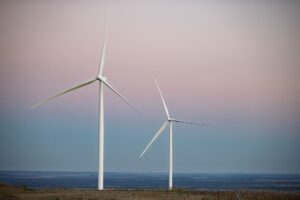Here’s some bad news for the coal industry, their advocates and acolytes: Even the highly conservative International Energy Agency is calling the end of the coal boom, and hailing the age of solar.
In its annual World Energy Outlook, for decades considered the industry bible for the fossil fuel sector, the IEA buries a few myths about coal, renewables and climate targets.
The coal boom is over, it says, even in its central policy scenario that does no more to tackle climate change than current commitments. If the world does act in accordance with the long term Paris targets, IEA says coal is dead and buried and going into immediate decline.
Welcome, it says, to the age of renewables. By 2040, in its “sustainable development scenario”, renewables account of 60 per cent of global power production.
Coal will account for a mere 6 per cent, and much of that only if it can make carbon capture and storage work. Given that the IEA has a constant history of seriously under-estimating both solar and wind, the technology shares could be even more dramatic in favour of renewables.
Solar, the IEA says, is already the cheapest fuel source in most countries and will dominate capacity additions. And the world will become electrified, turning to electric vehicles and changing many of its industrial process to take advantage of cheap renewables.
What’s more, the IEA also smashes the coal industry marketing line that its technology is essential to provide power to the hundreds of millions who do not yet have access to electricity.
 Its new Sustainable Development Scenario is designed to reduce CO2 emissions in line with the objectives of the Paris Agreement, while also tackling air pollution and achieving universal energy access. It shows the world is better off without coal to meet all or any of these targets.
Its new Sustainable Development Scenario is designed to reduce CO2 emissions in line with the objectives of the Paris Agreement, while also tackling air pollution and achieving universal energy access. It shows the world is better off without coal to meet all or any of these targets.
“Decentralised modular technology solutions with short lead times (such as solar PV or wind power) will be able to respond more easily to the simultaneous challenges of the Sustainable Development Scenario than centralised power generation facilities can,” the document says.
It says decentralised options – off-grid and mini-grid – are crucial to achieve full electricity access by 2030, especially for remote rural communities. Solar will be the source of power for more than three quarters of these people.
It adds that this way more people access to power, more people to get access to “clean cooking”, rather than dung and other products labelled under “biomass”, and more people get better health outcomes. In fact, 1.6 million lives are saved from reduced air pollution.
There is another scenario modelled, the Faster Transition Scenario which front loads the efforts to dcarbornise the world’s energy systems, rather than relying on “net negative” plans in the second half of the century.
In this scenario, coal comes to an abrupt end, fossil fuel subsidies need to be removed by 2025, more reenables need to be used in industrial process such as heat, more EVs are needed and more energy efficiency deployed. And CCS, if it can be made to work.
This is a stunning forecast for the notoriously conservative IEA whose annual World Energy Outlook has for the past four decades been the last refuge of naysayers pointing to increased demand for coal and other fossil fuels, and relying on its forecasts for slow uptake of renewables.
But now, even in its modest “new policies” scenario, the IEA says the stunning cost falls and explosive growth in wind and solar will change the nature of the power sector.
“Renewables will capture two-thirds of global investment in power plants as they become, for many countries, the least-cost source of new generation,” it says.
By 2040, solar becomes the biggest source of lower carbon power in both China and India, where the share of coal falls below 50 per cent, and wind becomes the biggest source of electricity in Europe.
Renewable sources of energy meet 40 per cent of the increase in primary demand and their explosive growth in the power sector marks the end of the boom years for coal.
Since 2000, coal-fired power generation capacity has grown by nearly 900GW, but net additions from today to 2040 are only 400GW in the New Policies scenario, and many of these are plants already under construc on.
In the Sustainable Development Scenario, coal demand goes into an immediate decline and oil consumption peaks soon thereafter.
“Power generation is all but decarbonised, relying by 2040 on generation from renewables (over 60%), nuclear power (15%) as well as a contribution from carbon capture and storage (6%).







